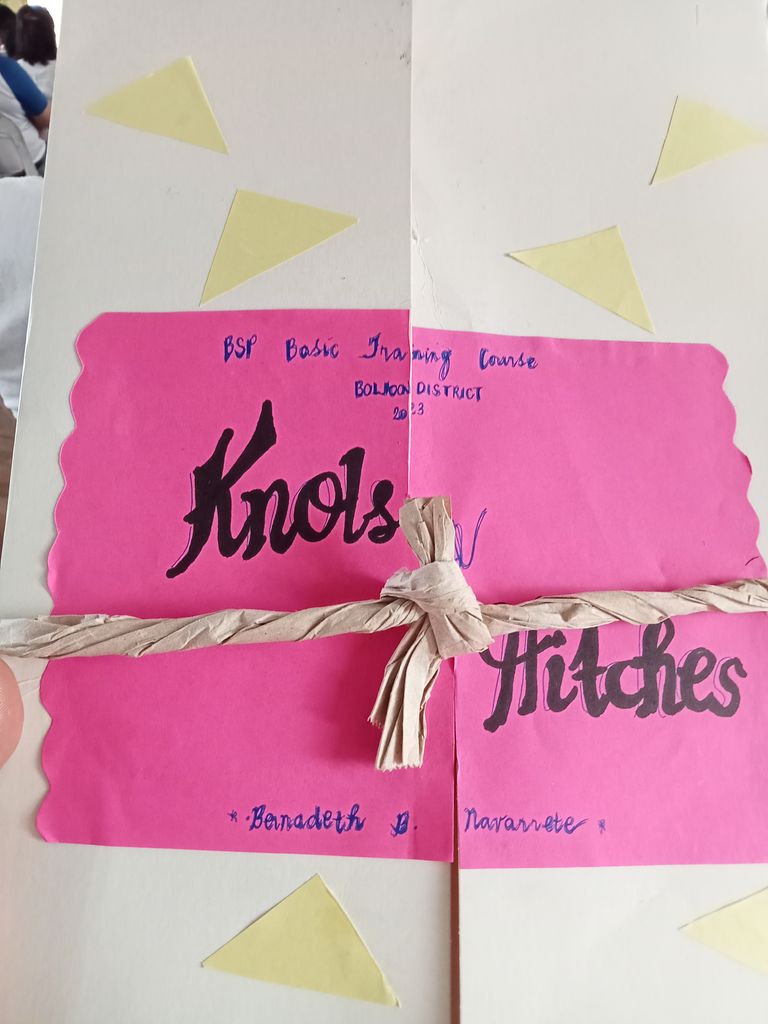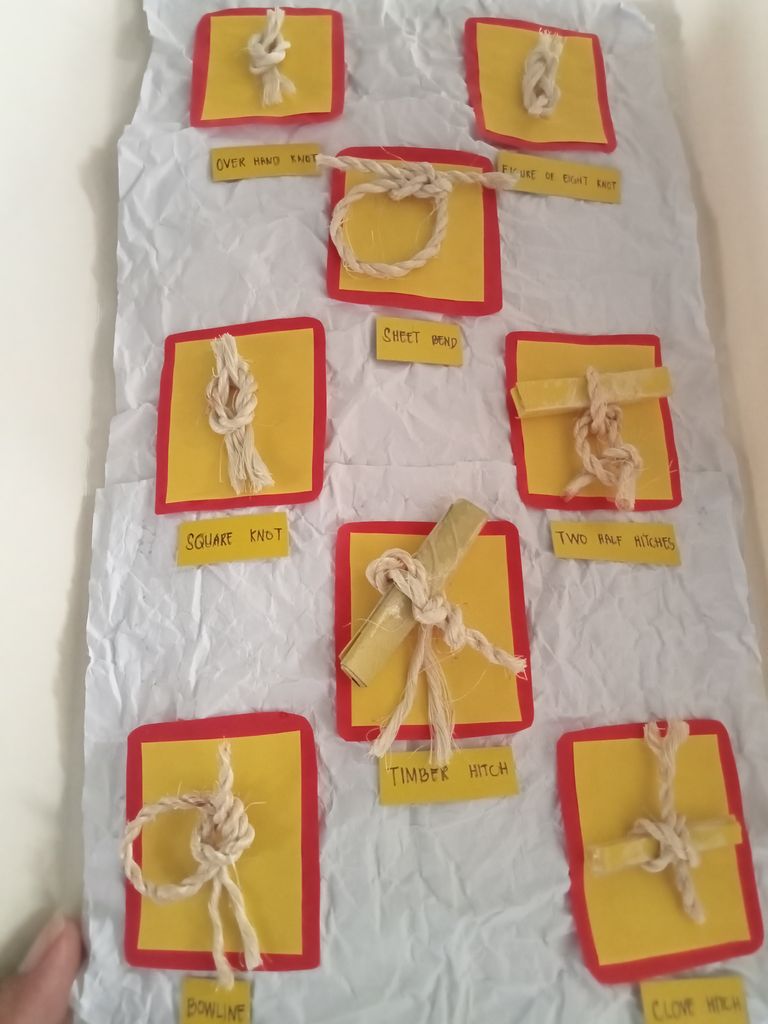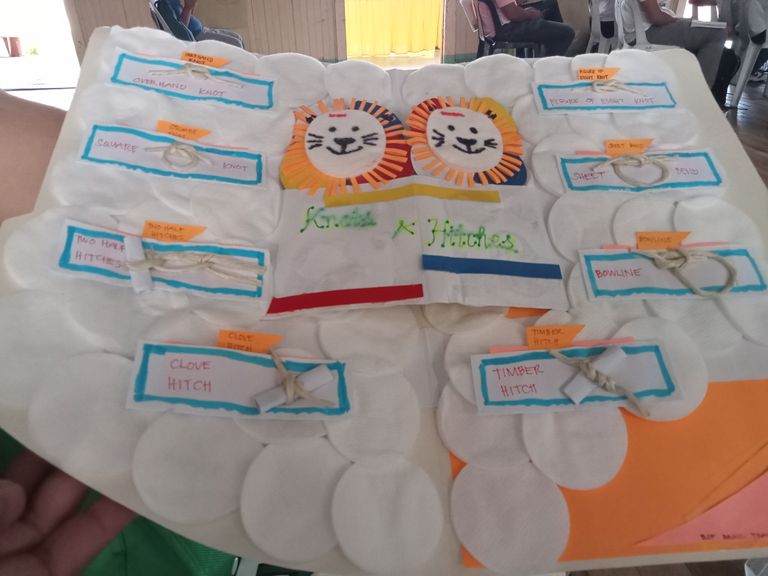



Certainly, knot tying is a fundamental skill in Boy Scouts, essential for various outdoor activities. Here are a few knots commonly taught and used in Boy Scouts:
Square Knot: The square knot is used for joining two ropes of equal diameter. It's often used for securing bandages and as a general-purpose knot.
Bowline Knot: This knot creates a loop at the end of a rope that doesn't slip or bind. It's handy for securing a rope around your waist, making it a valuable knot for rescue situations.
Clove Hitch: The clove hitch is useful for tying a rope to a post or stake. It's often used for setting up tents and shelters.
Two Half Hitches: This knot is excellent for securing a rope to a tree or a post. It's simple to tie and holds well under load.
Taut-Line Hitch: The taut-line hitch is an adjustable knot used for tent guylines or when you need to adjust the tension on a rope frequently.
Figure-Eight Knot: This knot is mainly used to create a stopper at the end of a rope, preventing it from slipping through a hole or pulley.
Sheet Bend: The sheet bend is used for joining two ropes of different diameters. It's a useful knot when you need to extend a rope.
Timber Hitch: Scouts use the timber hitch for securing a rope to a log or other cylindrical object.
Prusik Knot: More advanced, this knot is used for ascending or descending a rope and is often used in climbing and rappelling.
These are just a few examples of the knots taught in Boy Scouts. Learning and mastering these knots is not only practical for outdoor activities but also promotes teamwork, problem-solving, and safety, which are core values of the scouting movement.
Very nice... God Bless 🙏